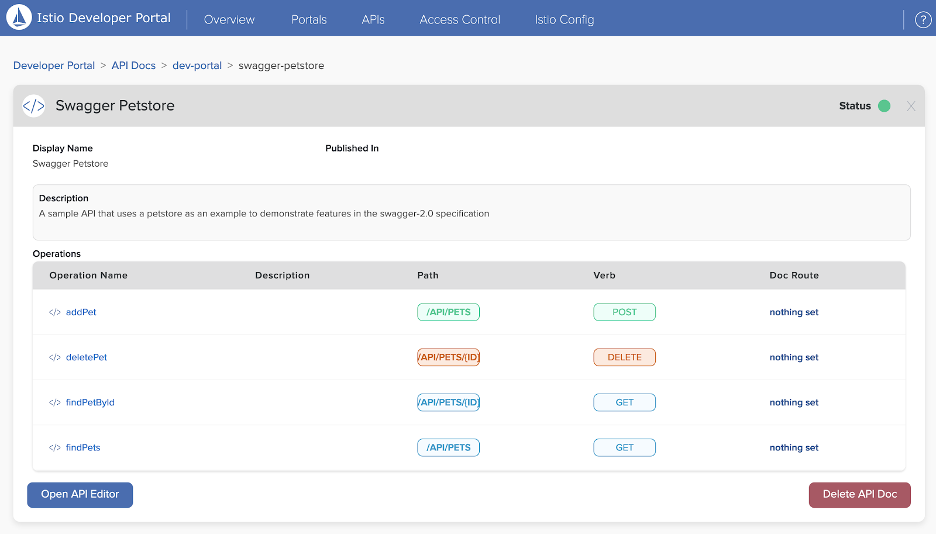Solo.io Adds Developer Portal for Istio
Solo.io has launched a developer portal that promises to make it easier to catalog, manage and securely publish application programming interfaces (APIs) that are exposed via an instance of the Istio service mesh.
Company CEO Idit Levine says one of the things holding back adoption of service meshes to manage microservices that expose APIs is the absence of a developer portal through which developers can easily discover and publish APIs.
The customizable Developer Portal for Istio Service Mesh employs the OpenAPI Spec and gRPC remote procedure call framework to automatically configure an Istio service mesh along with Istio gateways, VirtualService, Destination Rules and Envoy Filters needed to manage Istio ingress and handle API security.
IT teams can also be used to declaratively configure all elements of the developer portal system, including APIs and policies. There’s also a pluggable authorization service that enables external authorization systems to be incorporated into an Istio environment.
Finally, IT teams can enforce global rate limiting on APIs using the Istio Rate Limit extension.
Levine says that it’s apparent that service meshes are becoming platforms for API management within Kubernetes environments. The challenges organizations face are that Istio is not easy to configure and there are no portals that make the APIs exposed via Istio readily accessible to the average developer. The Developer Portal for Istio Service Mesh is designed to address both those issues, he says.
Istio is not the only service mesh available for Kubernetes, but it does enjoy the most support among IT vendors. Originally developed by Google, IBM and Lyft, Istio has also drawn support from Cisco Systems, VMware, Red Hat and others.
The release of the comes on the heels of the launch of Service Mesh Hub, an open source project led by Solo.io designed to make it easier for IT organizations to automate the management of network and security services. It provides a unified dashboard for installing, discovering, operating and extending a single service mesh or group of meshes that can be combined into a single virtual mesh. Solo.io has already made available a set of WebAssembly tools that make it easier to extend service mesh platforms.
Levine says IT organizations should expect Solo.io to extend the reach of its platforms and tools to other service meshes. However, currently the focus is primarily on Istio.
It’s still early days as far as service mesh adoption is concerned. Organizations often require a critical mass of microservices to be deployed on a Kubernetes cluster before they appreciate the need for a service mesh to manage them all. Many organizations are still in the early stages of adopting Kubernetes itself.
In the meantime, the Cloud Native Computing Foundation (CNCF) has thrown its weight behind Linkerd, which is an incubating level project. Thus far the backers of Istio have yet to align with any governing body.
Regardless of the path chosen, it’s clear service meshes will become a crucial part of the container ecosystem. Less clear is which ones might emerge as a de facto standard or otherwise.



